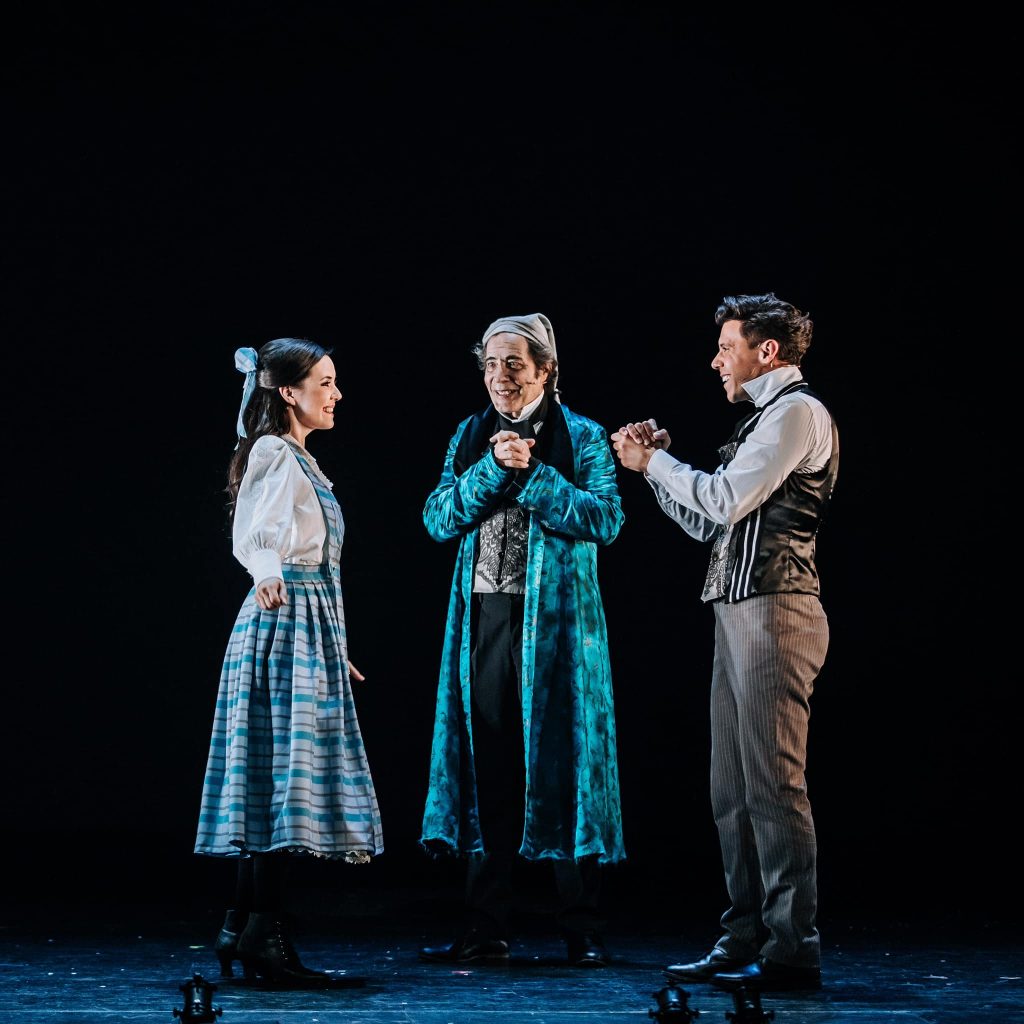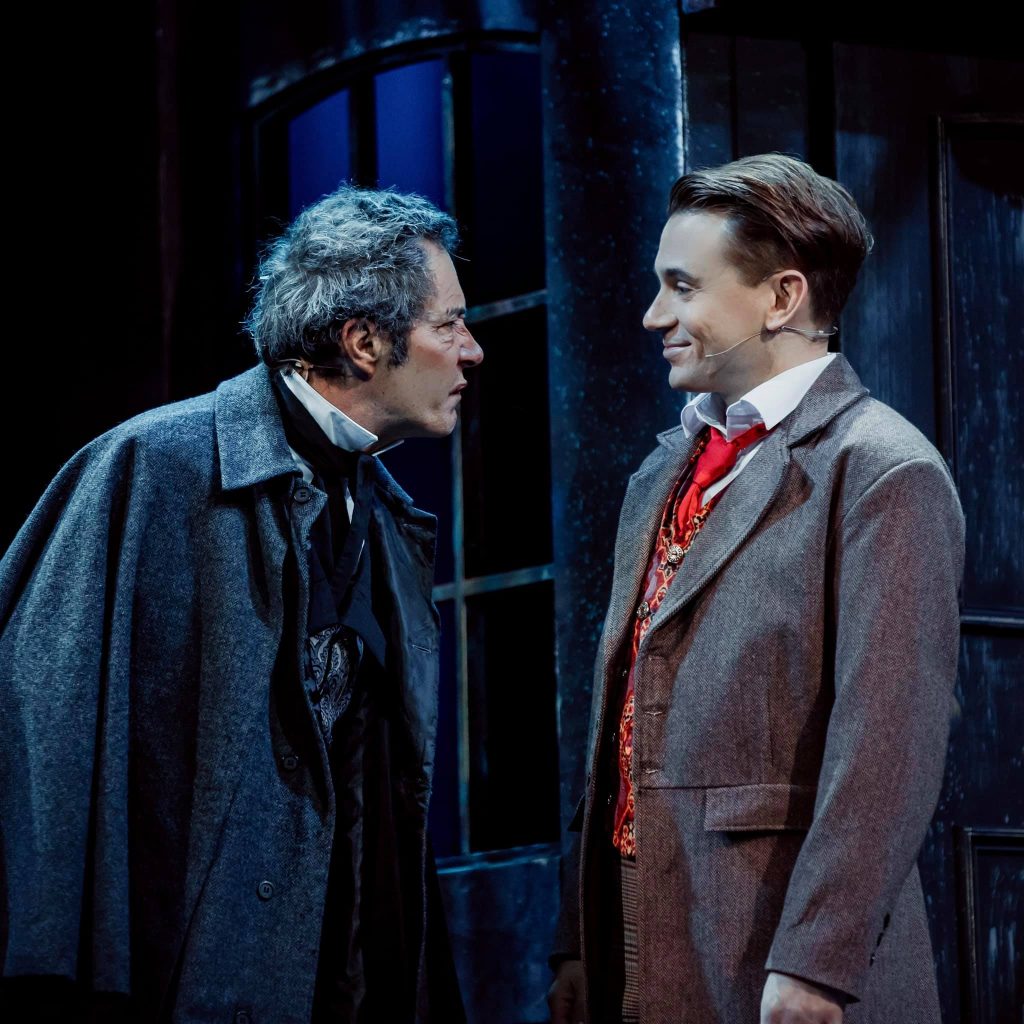
‘A Christmas Carol’ // shake & stir theatre co
‘A Christmas Carol’ was spectral.
While the rest of the state swelters in the heat of the Queensland summer, a slice of holiday magic returns to the Playhouse stage in the form of shake & stir theatre co’s adaptation of Charles Dickens’ ‘A Christmas Carol’. The show is enjoying its fourth season at QPAC, and after the tumultuous few years past, it seems as though the lessons behind this classic Christmas tale are more relevant than ever.
‘A Christmas Carol’ is a Christmas pop-culture staple, spawning countless adaptations for both stage and screen, and endless characters based on the miserly Scrooge. From Dickens’ own staged dramatic readings of the novel, to shake & stir’s adaptation, it seems as though this story was born to live on a stage.
The story follows one very eventful Christmas for Ebenezer Scrooge, a bitter money lender who cares very little for Christmas, or those around him. It takes audiences on a journey through Scrooge’s encounter with four spirits. First is Jacob Marley, his deceased business partner, who warns Scrooge that he will be visited by the ghosts of Christmas past, present and future to teach him the error of his churlish ways. Shake & stir’s adaptation is true to the story and translates perfectly into the theatre to deliver messages of forgiveness, generosity and humanity.
All aspects of the aesthetic choices of ‘A Christmas Carol’ are not only true to the Neo-Gothic visual composition but give a literal incarnation to the core themes of the show, like greed and poverty. Lighting design by Jason Glenwright perfectly complemented the tone of the show. Most often bathed in blue light, and shifting to dynamic spotlighting when the story called for visual focus, it gave true intensity to some of the darker and more dramatic moments of the play and contributed with great acumen to the Gothic aesthetic.
Masterful video design by Craig Wilkinson packed a whimsical punch and contributed invaluably to the storytelling. Projections created the dusky London streets, a ghostly graveyard and haunting depictions of the children of ignorance and want that torment Scrooge. Not only was it well-produced, but the choreography of the character’s interactions with the projections was tight and sharp, blurring the lines between reality and effects. A particular standout was Bryan Probets as the ghost of Marley, who duplicated and materialised in different areas of the stage, achieving a supernatural effect.
An undeniable benefit of utilising the same cast for each iteration of the show is the sharpness in the interaction with the movable set pieces, projection and the storyline. The set almost becomes a character unto itself with this skilful system of movement, morphing from the inside of Scrooge’s office to the ramshackle Cratchit household. This creates a fluid manner of telling the story, ensuring the tension of every moment is tightly wound, and held for just the right amount of time. Every piece of emotion, story, laugh-out-loud comedy and special effect takes up just the right amount of time, making the show succinct but sufficient.
Production design by Josh McIntosh came to an exquisite head in the prop and costume design. Scrooge’s money counting machine turns into Tiny Tim, as a puppet, and gives motive and reason behind why Scrooge ends up caring so much for the boy. The extravagant, royal blue robe that Scrooge wears during his encounters with the spirits stands in contrast to the dull colours that the other characters wear; highlighting how his wealth alienates him from others.
Musical composition by Salliana Campbell was pure magic, and the production violinist, Tabea Sitte, carried a ghostly energy as she floated from stage to gallery, accompanying the action onstage with ethereal violin.
‘A Christmas Carol’ is a technical masterpiece, never departing from its aesthetic but remaining grounded in the 21st century through the use of technology.
Not enough can be said for the visual spectacle that is ‘A Christmas Carol’, but what truly makes this production wonderful are the performers. Eugene Gilfedder brings an earthly and human quality to Scrooge, ultimately creating a character with whom the audience can empathise with, which is crucial in delivering the message of this didactic story. He takes the character through a metamorphosis, beginning the story as a bumbling, bitter old man who mumbles to himself and is unapologetically selfish, and ending almost as a child, ready to rediscover the world. Probets as the four apparitions was a pleasure to watch. He gave each of the spectres a character that the audience adored. From his ghost of Christmas present as a Scottish Santa Claus, to a Panto-Dame ghost of Christmas past, to his otherworldly, eerie Jacob Marley, Probets delivers his signature comedy to its fullest extent. The remaining cast played an array of characters and brought a sense of empathy and reality to each one. Lucas Stibbard and Nelle Lee were standouts as Mr and Ms Cratchit, and crafted two figures who encapsulated what it meant to be poor in the Victorian era.
While the ensemble could use more diversity in its casting, the lead actors are physically and technically perfect for their roles. The ensemble moved through a multitude of vastly different roles with ease and reverence for Dickens’ work.
‘A Christmas Carol’ brings all of the magic and morals of the original text to the stage, taking liberty in creativity, particularly in the allegorical design choices and interpretation of the ghost to create a spectacle that feels very relevant in 2021. It is a phenomenal treat to have theatre of this calibre being produced and performed in Queensland.
‘A Christmas Carol’ left the audience buzzing with festive cheer. Watching the immortal words of Charles Dickens come to sprawling life is frankly, extraordinary.
‘A Christmas Carol’ performs until Friday, 24 December 2021 at QPAC. For more information visit the shake & stir theatre co website.








